
Faculty Bookshelf
the faculty bookshelf
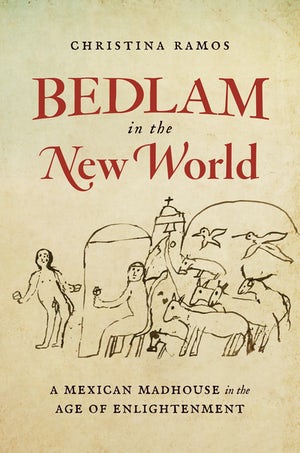
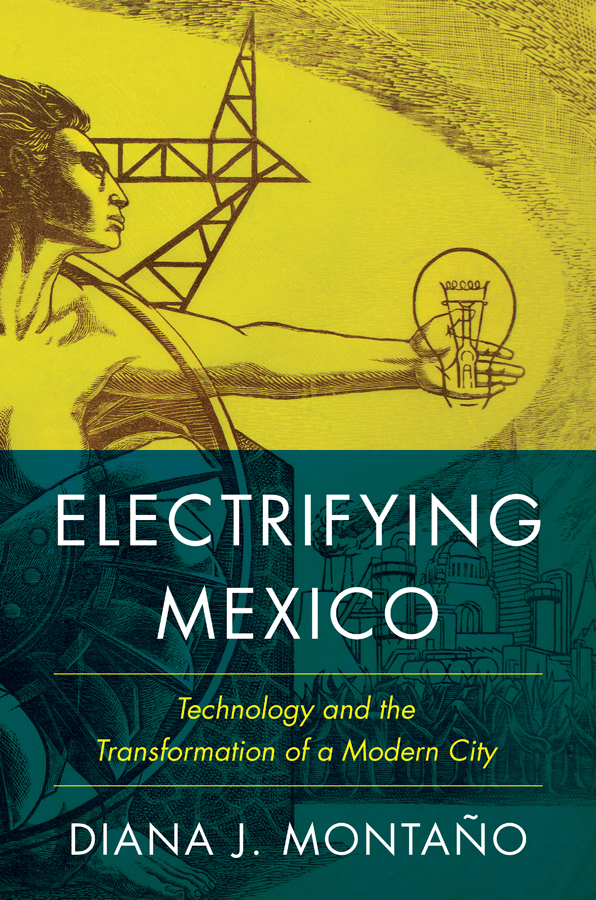
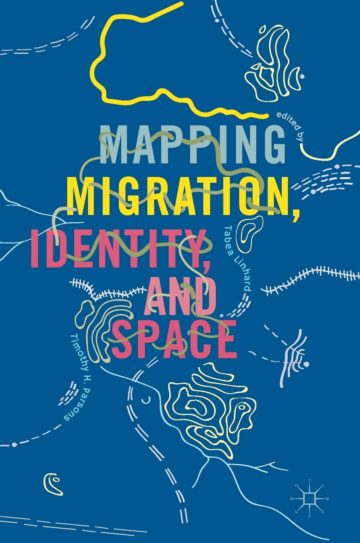
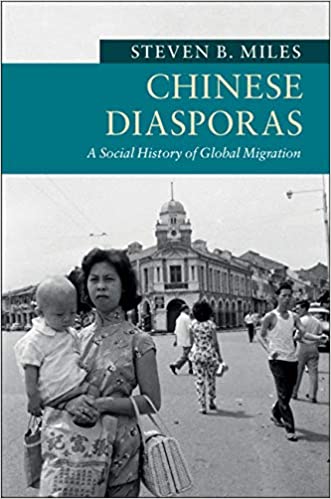
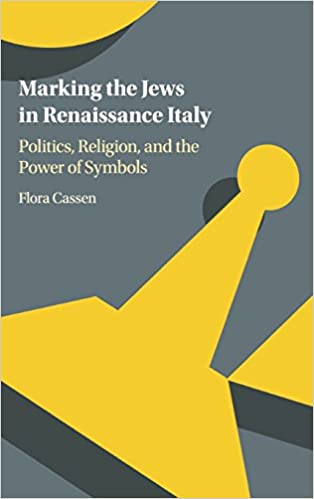
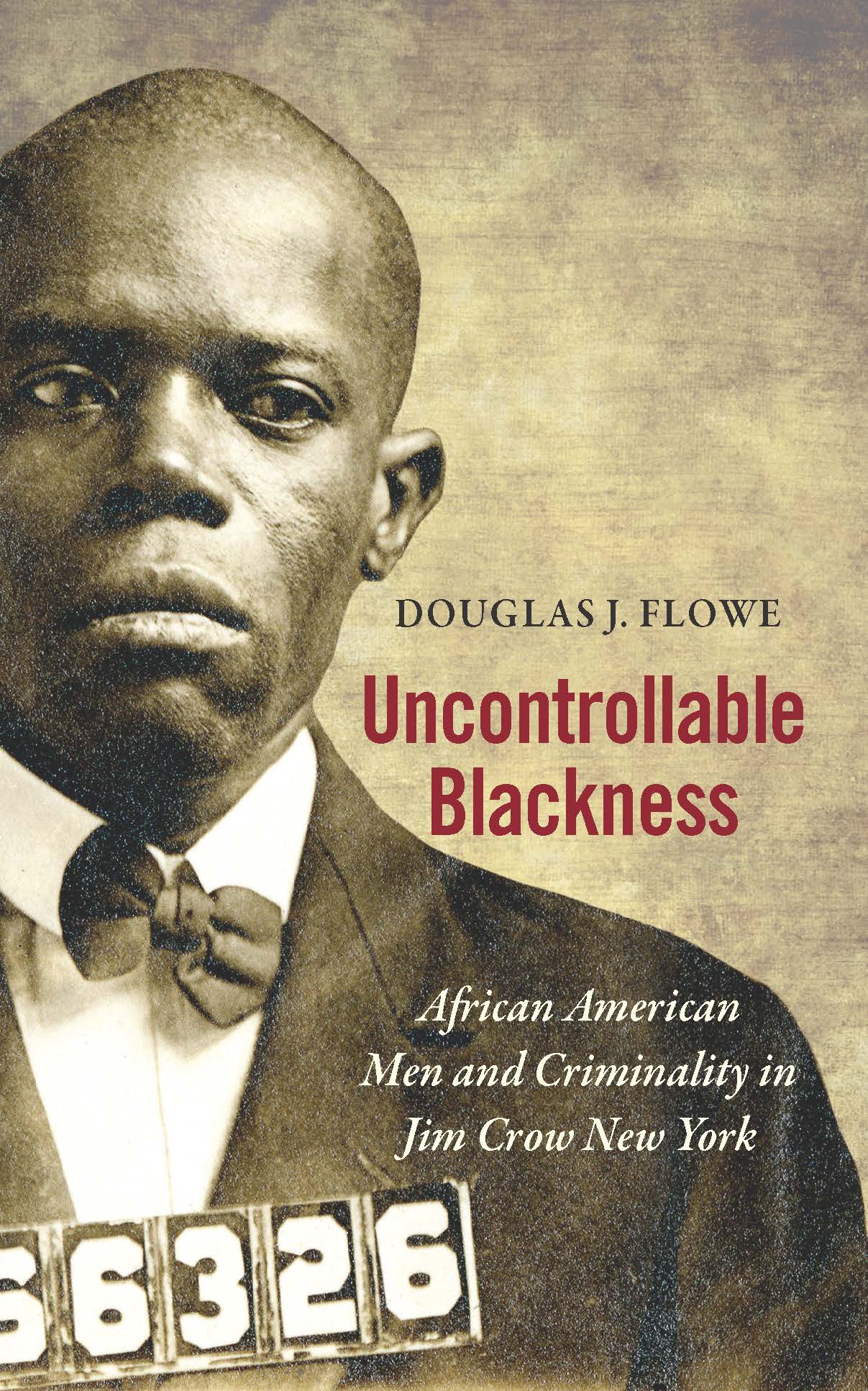
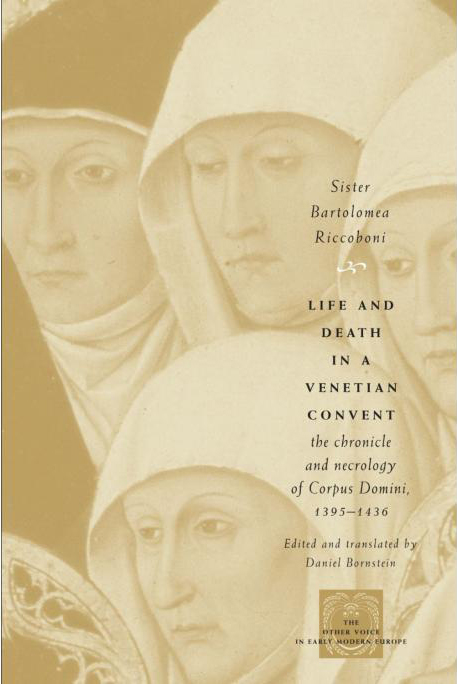
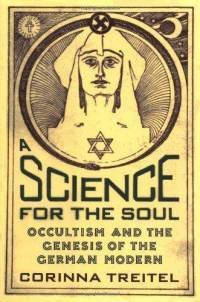
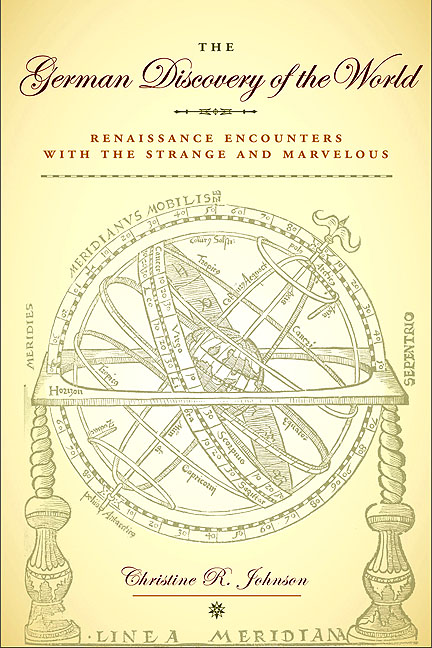
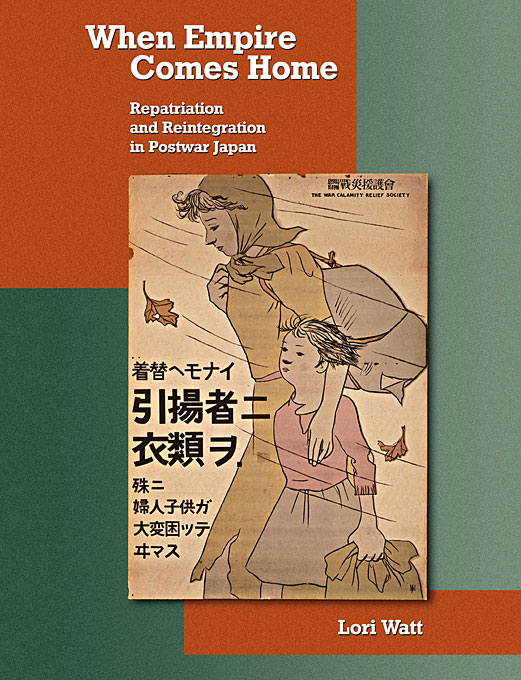

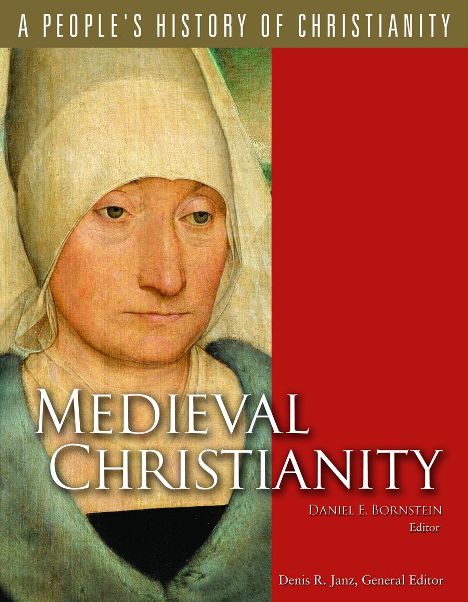
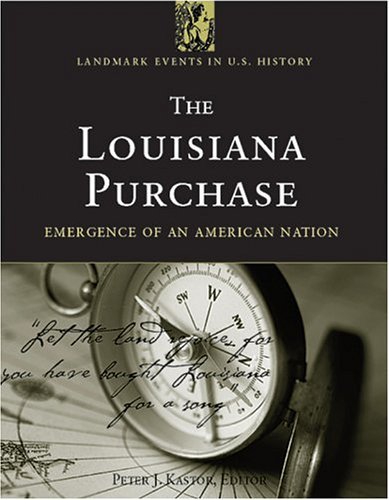
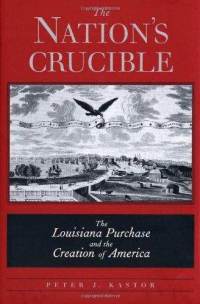

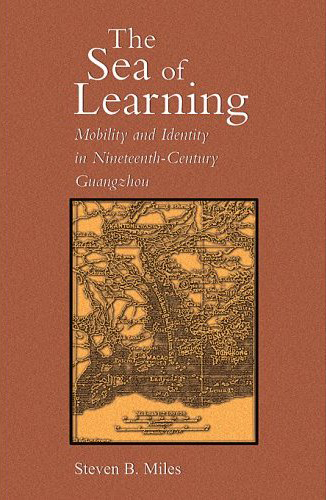

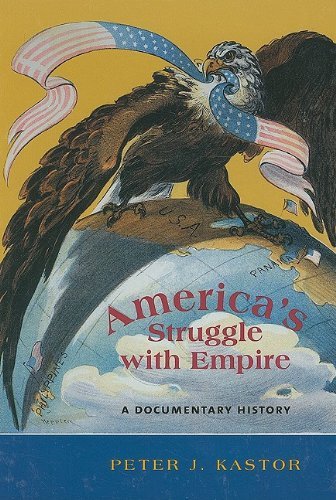


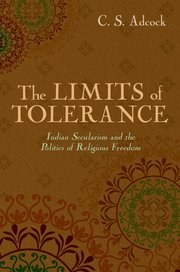

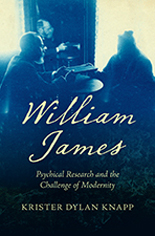

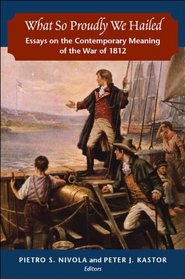
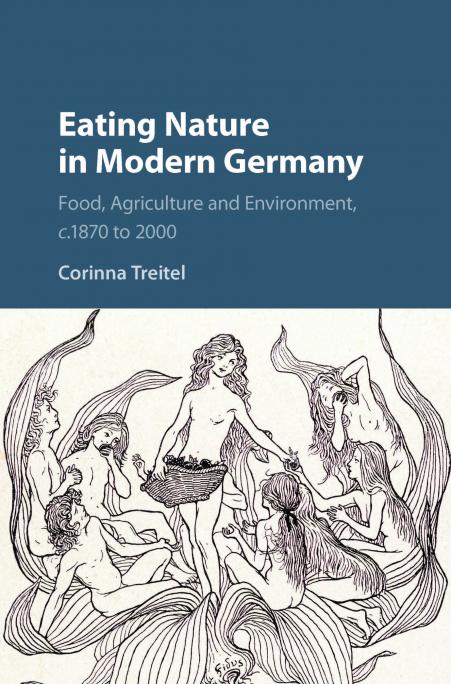
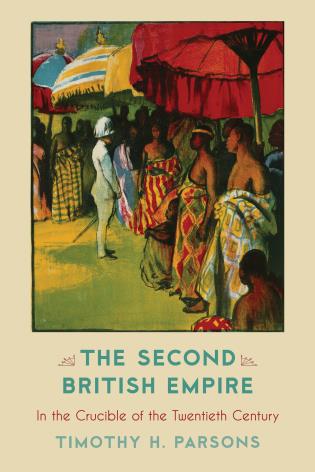


Beatrice's Last Smile: A New History of the Middle Ages
Mark Gregory Pegg's history of the Middle Ages opens and closes with martyrdom, the first that of a young Roman mother in a North African amphitheater in 203 and the second a French girl burned to death beside the Seine in 1431. Both Vibia Perpetua and Jeanne la Pucelle died for their Christian beliefs, yet that for which they willingly sacrificed their lives connects and separates them. Both were divinely inspired, but one believed her deity shared the universe with other gods, and the other knew that her Creator ruled heaven and earth. Between them, across the centuries, lives were shaped by the ebb and flow of the divine and the human. Here is the story of people struggling in life and in death to understand themselves and their relationship to God.
Beatrice's Last Smile interweaves vivid portraits of such individuals to offer a sweeping and immersive story. Some are of enduring renown ― Augustine, Muhammad, Charlemagne, Heloise ―and others are obscure. An Egyptian youth fighting demons in the desert as the first monk; a Briton becomes a holy man after enslavement in Ireland; an emperor in Constantinople watches as rioters torch the city; a old Syrian monk advises the English on sex; the soul of a Merovingian noble flies through the night sky to heaven; an Irish warrior surfs the waves like a dolphin as he flees the Vikings; a crusader's boots squelch with blood on the streets of Jerusalem; a troubadour sings of love; a Muslim lord expresses admiration of the Templars; a pope proclaims that Christendom encompasses all time and space; a barefoot Franciscan friar visits the Great Khan of the Mongols; a Parisian rabbi argues for the holiness of the Talmud; and a poet laments being alive amid the horror of the Black Death. Together, they take readers from the vastness of the Roman Empire to small communities between the Mediterranean and the North Sea, from the nomads of the Asian steppes to the triumphant Church of Latin Christendom.
Beatrice's Last Smile offers a pulsating history of the West: the passionate belief in the old gods that yields to a cosmos shaped by one; the transition from a penitential culture to a confessional one; the universal obsession with imitating Christ. The book is named for the moment in Dante Alighieri's Divine Comedy when his long-dead love, Beatrice, smiles one final time at Dante in paradise before turning away to look eternally upon the face of God.
Mark Gregory Pegg's epic narrative captures a millennium within that fleeting smile, in ways that modern readers will find illuminating and haunting.
The Social Topography of a Rural Community: Scenes of Labouring Life in Seventeenth-Century England
The Social Topography of a Rural Community is a micro-history of an exceptionally well-documented seventeenth-century English village: Chilvers Coton in north-eastern Warwickshire. Drawing on a rich archive of sources, including an occupational census, detailed estate maps, account books, private journals, and hundreds of deeds and wills, and employing a novel micro-spatial methodology, it reconstructs the life experience of some 780 inhabitants spread across 176 households. This offers a unique opportunity to visualize members of an English rural community as they responded to, and in turn initiated, changes in social and economic activity, making their own history on their own terms. In so doing the book brings to the fore the social, economic, and spatial lives of people who have been marginalized from conventional historical discourse, and offers an unusual level of detail relating to the spatial and demographic details of local life.
Each of the substantive chapters focuses on the contributions and experiences of a particular household in the parish-the mill, the vicarage, the alehouse, the blacksmith's forge, the hovels of the labourers and coalminers, the cottages of the nail-smiths and ribbon-weavers, the farms of the yeomen and craftsmen, and the manor house of Arbury Hall itself-locating them precisely on specific sites in the landscape and the built environment; and sketching the evolving 'taskscapes' in which the inhabitants dwelled. A novel contribution to spatial history, as well as early modern material, social and economic history more generally, this study represents a highly original analysis of the significance of place, space, and flow in the history of English rural communities.
Critical Theories of Anti-Semitism (New Directions in Critical Theory)
Despite its persistence and viciousness, anti-Semitism remains undertheorized in comparison with other forms of racism and discrimination. How should anti-Semitism be defined? What are its underlying causes? Why do anti-Semites target Jews? In what ways has Judeophobia changed over time? What are the continuities and disconnects between medieval anti-Judaism and the Holocaust? How does criticism of the state of Israel relate to anti-Semitism? And how can social theory illuminate the upsurge in attacks on Jews today?
Considering these questions and many more, this book is at once a philosophical reflection on key problems in the analysis of anti-Semitism and a history of its leading theories and theorists. Jonathan Judaken explores the methodological and conceptual issues that have vexed the study of Judeophobia and calls for a reconsideration of the definitions, categories, and narratives that underpin overarching explanations. He traces how a range of thinkers have wrestled with these challenges, examining the theories of Jean-Paul Sartre, the Frankfurt School, Hannah Arendt, and Jean-François Lyotard, alongside the works of sociologists Talcott Parsons and Zygmunt Bauman and historians Léon Poliakov and George Mosse. Judaken argues against claims about the uniqueness of Judeophobia, demonstrating how it is entangled with other racisms: Islamophobia, Negrophobia, and xenophobia. Critical Theories of Anti-Semitism not only urges readers to question how they think about Judeophobia but also draws them into conversation with a range of leading thinkers whose insights are sorely needed in this perilous moment.
Codes of Modernity: Chinese Scripts in the Global Information Age
In the late nineteenth century, Chinese reformers and revolutionaries believed that there was something fundamentally wrong with the Chinese writing system. The Chinese characters, they argued, were too cumbersome to learn, blocking the channels of communication, obstructing mass literacy, and impeding scientific progress. What had sustained a civilization for more than two millennia was suddenly recast as the root cause of an ongoing cultural suicide. China needed a new script to survive in the modern world.
Codes of Modernity explores the global history of Chinese script reforms―efforts to alphabetize or simplify the writing system―from the 1890s to the 1980s. Examining the material conditions and political economy underlying attempts to modernize scripts, Uluğ Kuzuoğlu argues that these reforms were at the forefront of an emergent information age. Faced with new communications technologies and infrastructures as well as industrial, educational, and bureaucratic pressures for information management, reformers engineered scripts as tools to increase labor efficiency and create alternate political futures.
Kuzuoğlu considers dozens of proposed scripts, including phonetic alphabets, syllabaries, character simplification schemes, latinization, and pinyin. Situating them in a transnational framework, he stretches the geographical boundaries of Chinese script reforms to include American behavioral psychologists, Soviet revolutionaries, and Central Asian typographers, who were all devising new scripts in pursuit of informational efficiency. Codes of Modernity brings these experiments together to offer new ways to understand scripts and rethink the shared experiences of a global information age.
Bedlam in the New World: A Mexican Madhouse in the Age of Enlightenment
Faculty Fellow, Spring 2020
A rebellious Indian proclaiming noble ancestry and entitlement, a military lieutenant foreshadowing the coming of revolution, a blasphemous Creole embroiderer in possession of a bundle of sketches brimming with pornography. All shared one thing in common. During the late eighteenth century, they were deemed to be mad and forcefully admitted to the Hospital de San Hipólito in Mexico City, the first hospital of the New World to specialize in the care and custody of the mentally disturbed.
Christina Ramos reconstructs the history of this overlooked colonial hospital from its origins in 1567 to its transformation in the eighteenth century, when it began to admit a growing number of patients transferred from the Inquisition and secular criminal courts. Drawing on the poignant voices of patients, doctors, friars, and inquisitors, Ramos treats San Hipólito as both a microcosm and a colonial laboratory of the Hispanic Enlightenment—a site where traditional Catholicism and rationalist models of madness mingled in surprising ways. She shows how the emerging ideals of order, utility, rationalism, and the public good came to reshape the institutional and medical management of madness. While the history of psychiatry’s beginnings has often been told as seated in Europe, Ramos proposes an alternative history of madness’s medicalization that centers colonial Mexico and places religious figures, including inquisitors, at the pioneering forefront.
Electrifying Mexico Technology and the Transformation of a Modern City
Faculty Fellow, Fall 2019
Many visitors to Mexico City’s 1886 Electricity Exposition were amazed by their experience of the event, which included magnetic devices, electronic printers, and a banquet of light. It was both technological spectacle and political messaging, for speeches at the event lauded President Porfirio Díaz and bound such progress to his vision of a modern order.
Diana J. Montaño explores the role of electricity in Mexico’s economic and political evolution, as the coal-deficient country pioneered large-scale hydroelectricity and sought to face the world as a scientifically enlightened “empire of peace.” She is especially concerned with electrification at the social level. Ordinary electricity users were also agents and sites of change. Montaño documents inventions and adaptations that served local needs while fostering new ideas of time and space, body and self, the national and the foreign. Electricity also colored issues of gender, race, and class in ways specific to Mexico. Complicating historical discourses in which Latin Americans merely use technologies developed elsewhere, Electrifying Mexico emphasizes a particular national culture of scientific progress and its contributions to a uniquely Mexican modernist political subjectivity.
Mapping Migration, Identity, and Space
This interdisciplinary collection of essays focuses on the ways in which movements of people across natural, political and cultural boundaries shape identities that are inexorably linked to the geographical space that individuals on the move cross, inhabit and leave behind. As conflicts over identities and space continue to erupt on a regular basis, this book reads the relationship between migration, identity and space from a fresh and innovative perspective.
Chinese Diasporas: A Social History of Global Migration
Chinese Diasporas provides a concise and compelling new history of internal and external Chinese migration from the sixteenth century to the present day. Steven B. Miles places Chinese migrants and their families at the center of his narrative through a series of engaging case studies taking readers from the heart of Ming China to the global property markets of the twenty-first century. The focus on individual migrants and their descendants reveals the ways in which the "Chinese diaspora" has consisted of distinct paths of migration from specific emigrant communities to targeted destinations both within China and abroad. This is essential reading for those interested in the history of the Chinese diaspora and the overseas Chinese, and for those interested in the role of migration in the making of the modern world.
Marking the Jews in Renaissance Italy: Politics, Religion, and the Power of Symbols
What might appear a straightforward task of archival documentation proves remarkably protean, slippery, and challenging, as Flora Cassen, in Marking the Jews in Renaissance Italy: Politics, Religion, and the Power of Symbols, seeks to trace the history of the badge—usually a yellow circular patch or hat—that Jews were required to wear in public in areas of northern Italy during the early modern era. This stimulating book has highlighted the complexity of the issue without, of course, being able to resolve all of the questions it raises.
Uncontrollable Blackness: African American Men and Criminality in Jim Crow New York
Early twentieth-century African American men in northern urban centers like New York faced economic isolation, segregation, a biased criminal justice system, and overt racial attacks by police and citizens. In this book, Douglas J. Flowe interrogates the meaning of crime and violence in the lives of these men, whose lawful conduct itself was often surveilled and criminalized, by focusing on what their actions and behaviors represented to them. He narrates the stories of men who sought profits in underground markets, protected themselves when law enforcement failed to do so, and exerted control over public, commercial, and domestic spaces through force in a city that denied their claims to citizenship and manhood. Flowe furthermore traces how the features of urban Jim Crow and the efforts of civic and progressive leaders to restrict their autonomy ultimately produced the circumstances under which illegality became a form of resistance.
Drawing from voluminous prison and arrest records, trial transcripts, personal letters and documents, and investigative reports, Flowe opens up new ways of understanding the black struggle for freedom in the twentieth century. By uncovering the relationship between the fight for civil rights, black constructions of masculinity, and lawlessness, he offers a stirring account of how working-class black men employed extra-legal methods to address racial injustice.
Life and Death in a Venetian Convent
These works by Sister Bartolomea Riccoboni offer an intimate portrait of the women who inhabited the Venetian convent of Corpus Domini, where they shared a religious life bounded physically by the convent wall and organized temporally by the rhythms of work and worship. At the same time, they show how this cloistered community vibrated with news of the great ecclesiastical events of the day, such as the Great Western Schism and the Council of Constance.
A Science for the Soul
In A Science for the Soul, historian Corinna Treitel explores the appeal and significance of German occultism in all its varieties between the 1870s and the 1940s, locating its dynamism in the nation's struggle with modernization and the public's dissatisfaction with scientific materialism. Occultism, Treitel notes, served as a bridge between traditional religious beliefs and the values of an increasingly scientific, secular, and liberal society. Drawing on a wealth of archival materials, Treitel describes the individuals and groups who participated in the occult movement, reconstructs their organizational history, and examines the economic and social factors responsible for their success.
The German Discovery of the World
Current historiography suggests that European nations regarded the New World as an inassimilable "other" that posed fundamental challenges to the accepted ideas of Renaissance culture. The German Discovery of the World presents a new interpretation that emphasizes the ways in which the new lands and peoples in Africa, Asia, and the Americas were imagined as comprehensible and familiar. In chapters dedicated to travel narratives, cosmography, commerce, and medical botany, Johnson examines how existing ideas and methods were deployed to make German commentators experts in the overseas world, and how this incorporation established the discoveries as new and important intellectual, commercial, and scientific developments.
Written in an engaging and accessible style, this book brings to light the dynamic world of the German Renaissance, in which humanists, cartographers, reformers, politicians, botanists, and merchants appropriated the Portuguese and Spanish expeditions to the East and West Indies for their own purposes and, in so doing, reshaped their world.
When Empire Comes Home
Following the end of World War II in Asia, the Allied powers repatriated over six million Japanese nationals from colonies and battlefields throughout Asia and deported more than a million colonial subjects from Japan to their countries of origin. Lori Watt analyzes how the human remnants of empire, those who were moved and those who were left behind, served as sites of negotiation in the process of the jettisoning of the colonial project and in the creation of new national identities in Japan. Through an exploration of the creation and uses of the figure of the repatriate, in political, social, and cultural realms, this study addresses the question of what happens when empire comes home.
Empires of the Imagination
Empires of the Imagination takes the Louisiana Purchase as a point of departure for a compelling new discussion of the interaction between France and the United States. In addition to offering the first substantive synthesis of this transatlantic relationship, the essays collected here offer new interpretations on themes vital to the subject, ranging from political culture to intercultural contact to ethnic identity. They capture the cultural breadth of the territories encompassed by the Louisiana Purchase, exploring not only French and Anglo-American experiences, but also those of Native Americans and African Americans.
Medieval Christianity
The fourth volume in A People's History of Christianity series accents the astounding range of cultural and religious experience within medieval Christianity and the ways in which religious life structured all aspects of the daily lives of ordinary Christians. With ranking scholars from the U.S. and the Continent, this volume explores rituals of birth and death, daily parish life, lay-clerical relations, and relations with Jews and Muslims through a thousand years and many lands.
The Louisiana Purchase
The Louisiana Purchase combines documents and analytical essays timed for the bicentennial year in 2003. This timely collection will explain how and why the United States acquired the massive territory that more than doubled the size of the country, the profound social and political changes that came in the wake of the Purchase, its impact on such far reaching topics like the Constitution, slavery, federalism, political behavior, nation building, transportation, the media, and global affairs, and how major historical figures like Thomas Jefferson, Aaron Burr, and James Madison, were influenced by the Purchase.
The Nation's Crucible
In 1803 the United States purchased Louisiana from France. This seemingly simple acquisition brought with it an enormous new territory as well as the country's first large population of non-naturalized Americans - Native Americans, African Americans, and Francophone residents. What would become of those people dominated national affairs in the years that followed. This book chronicles that contentious period from 1803 to 1821, years during which people proposed numerous visions of the future for Louisiana and the United States. The Louisiana Purchase proved to be the crucible of American nationhood, Peter Kastor argues. The incorporation of Louisiana was among the most important tasks for a generation of federal policymakers. It also transformed the way people defined what it meant to be an American.
The Corruption of Angels: The Great Inquisition of 1245-1246
Mark Gregory Pegg builds a richly textured understanding of social life in southern France in the early thirteenth century. The Corruption of Angels shows how heretical and orthodox beliefs flourished side by side and, more broadly, what life was like in one particular time and place. Pegg's passionate and beautifully written evocation of a medieval world will fascinate a diverse readership within and beyond the academy.
The Sea of Learning
In 1817 a Cantonese scholar was mocked in Beijing as surprisingly learned for someone from the boondocks; in 1855 another Cantonese scholar boasted of the flourishing of literati culture in his home region. Not without reason, the second man pointed to the Xuehaitang (Sea of Learning Hall) as the main factor in the upsurge of learning in the Guangzhou area. Founded in the 1820s by the eminent scholar-official Ruan Yuan, the Xuehaitang was indeed one of the premier academies of the nineteenth century.
The celebratory discourse that portrayed the Xuehaitang as having radically altered literati culture in Guangzhou also legitimated the academy’s place in Guangzhou and Guangzhou’s place as a cultural center in the Qing empire. This study asks: Who constructed this discourse and why? And why did some Cantonese elites find this discourse compelling while others did not? To answer these questions, Steven Miles looks beyond intellectual history to local social and cultural history. Arguing that the academy did not exist in a scholarly vacuum, Miles contends that its location in the city of Guangzhou and the Pearl River Delta embedded it in social settings and networks that determined who utilized its resources and who celebrated its successes and values.
Florence and Beyond
This volume celebrates John M. Najemy and his contributions to the study of Florentine and Italian Renaissance history. Over the last three decades, his books and articles on Florentine politics and political thought have substantially revised the narratives and contours of these fields. They have also provided a framework into which he has woven innovative new threads that have emerged in Renaissance social and cultural history. Presented by his many students and friends, the essays aim to highlight his varied interests and to suggest where they may point for future studies of Florence and, indeed, beyond.
America's Struggle with Empire: A Documentary History
Drawing from a wide range of primary sources, this fascinating new reference brings unparalleled focus to the history of U.S. attempts to govern foreign territories and noncitizens. With the help of introductory essays and explanatory headnotes, the volume examines how these encounters have been viewed by Americans, and how they have shaped the relationship between the United States and the rest of the world. The volume explores how a democratic republic that proclaims a commitment to personal and national independence has gone about governing foreign territory and foreign people.
A Most Holy War
In A Most Holy War, historian Mark Pegg has produced a swift-moving, gripping narrative of this horrific crusade, drawing in part on thousands of testimonies collected by inquisitors in the years 1235 to 1245. These accounts of ordinary men and women, remembering what it was like to live through such brutal times, bring the story vividly to life. Pegg argues that generations of historians (and novelists) have misunderstood the crusade; they assumed it was a war against the Cathars, the most famous heretics of the Middle Ages. The Cathars, Pegg reveals, never existed. He further shows how a millennial fervor about "cleansing" the world of heresy, coupled with a fear that Christendom was being eaten away from within by heretics who looked no different than other Christians, made the battles, sieges, and massacres of the crusade almost apocalyptic in their cruel intensity. In responding to this fear with a holy genocidal war, Innocent III fundamentally changed how Western civilization dealt with individuals accused of corrupting society. This fundamental change, Pegg argues, led directly to the creation of the inquisition, the rise of an anti-Semitism dedicated to the violent elimination of Jews, and even the holy violence of the Reconquista in Spain and in the New World in the fifteenth century. All derive their divinely sanctioned slaughter from the Albigensian Crusade.
William Clark's World
William Clark, co-captain of the famous Lewis and Clark Expedition, devoted his adult life to describing the American West. But this task raised a daunting challenge: how best to bring an unknown continent to life for the young republic? Through Clark's life and career, this book explores how the West entered the American imagination. While he never called himself a writer or an artist, Clark nonetheless drew maps, produced books, drafted reports, surveyed landscapes, and wrote journals that made sense of the West for a new nation fascinated by the region’s potential but also fearful of its dangers. William Clark’s World presents a new take on the manifest destiny narrative and on the way the West took shape in the national imagination in the early nineteenth century.
The Limits of Tolerance: Indian Secularism and the Politics of Religious Freedom
This book provides a critical history of the distinctive tradition of Indian secularism known as Tolerance. Since it was first advanced by Mohandas Gandhi, the Tolerance ideal has measured secularism and civil religiosity by contrast with proselytizing religion. In India today, it informs debates over how the right to religious freedom should be interpreted on the subcontinent. Not only has Tolerance been an important political ideal in India since the early twentieth century; the framing assumptions of Tolerance permeate historical understandings among scholars of South Asian religion and politics.
"Pioneers and Partisans: An Oral History of Nazi Genocide in Belorussia"
Through oral histories with several survivors, video testimonies, and memoirs, Anika Walke reveals the crucial roles of age and gender in the ways young Jews survived and remembered the Nazi genocide, and shows how shared experiences of trauma facilitated community building within and beyond national groups.
Pioneers and Partisans uncovers the repeated transformations of identity that Soviet Jewish children and adolescents experienced, from Soviet citizens in the prewar years, to a target of genocidal violence during the war, to a barely accepted national minority in the postwar Soviet Union.
William James: Psychical Research and the Challenge of Modernity
In this insightful new book on the remarkable William James, the American psychologist and philosopher, Krister Dylan Knapp provides the first deeply historical and acutely analytical account of James's psychical research. While showing that James always maintained a critical stance toward claims of paranormal phenomena like spiritualism, Knapp uses new sources to argue that psychical research held a strikingly central position in James’s life. It was crucial to his familial and professional relationships, the fashioning of his unique intellectual disposition, and the shaping of his core doctrines, especially the will-to-believe, empiricism, fideism, and theories of the subliminal consciousness and immortality.
A City Consumed
Though now remembered as an act of anti-colonial protest leading to the Egyptian military coup of 1952, the Cairo Fire that burned through downtown stores and businesses appeared to many at the time as an act of urban self-destruction and national suicide. The logic behind this latter view has now been largely lost. Offering a revised history, Nancy Reynolds looks to the decades leading up to the fire to show that the lines between foreign and native in city space and commercial merchandise were never so starkly drawn.
What So Proudly We Hailed
What So Proudly We Hailed looks at the War of 1812 in part through the lens of today's America. On the bicentennial of that formative yet largely forgotten period in U.S. history, this provocative book asks: What did Americans learn—and not learn—from the experience? What instructive parallels and distinctions can be drawn with more recent events? How did it shape the nation?
Eating Nature in Modern Germany: Food, Agriculture and Environment, ca 1870-2000
Adolf Hitler was a vegetarian and the Dachau concentration camp had an organic herb garden. Vegetarianism, organic farming, and other such practices have enticed a wide variety of Germans, from socialists, liberals, and radical anti-Semites in the nineteenth century to fascists, communists, and Greens in the twentieth century. Corinna Treitel offers a fascinating new account of how Germans became world leaders in developing more 'natural' ways to eat and farm. Used to conserve nutritional resources with extreme efficiency at times of hunger and to optimize the nation's health at times of nutritional abundance, natural foods and farming belong to the biopolitics of German modernity. Eating Nature in Modern Germany brings together histories of science, medicine, agriculture, the environment, and popular culture to offer the most thorough and historically comprehensive treatment yet of this remarkable story.
The Second British Empire: In the Crucible of the Twentieth Century
At its peak, the British Empire spanned the world and linked diverse populations in a vast network of exchange that spread people, wealth, commodities, cultures, and ideas around the globe. By the turn of the twentieth century, this empire, which made Britain one of the premier global superpowers, appeared invincible and eternal. This compelling book reveals, however, that it was actually remarkably fragile. Reconciling the humanitarian ideals of liberal British democracy with the inherent authoritarianism of imperial rule required the men and women who ran the empire to portray their non-Western subjects as backward and in need of the civilizing benefits of British rule. However, their lack of administrative manpower and financial resources meant that they had to recruit cooperative local allies to actually govern their colonies.
Slavery at Sea: Terror, Sex, and Sickness in the Middle Passage
In her new book Slavery at Sea: Terror, Sex, and Sickness in the Middle Passage, historian Sowande' Mustakeem reveals the forgotten world of 18th century slave ships. Here, she shares the tragic story of one enslaved woman and discusses why it's so important for Americans to confront this foundational, brutal chapter of history. Mustakeem's research focuses on the experiences of those most frequently left out of the history of the Middle Passage - women, children, the elderly, and the diseased.
Upriver Journeys: Diaspora and Empire in Southern China, 1570-1850
Tracing journeys of Cantonese migrants along the West River and its tributaries, this book describes the circulation of people through one of the world’s great river systems between the late sixteenth and mid-nineteenth centuries. Steven B. Miles examines the relationship between diaspora and empire in an upriver frontier, and the role of migration in sustaining families and lineages in the homeland of what would become a global diaspora. Based on archival research and multisite fieldwork, this innovative history of mobility explores a set of diasporic practices ranging from the manipulation of household registration requirements to the maintenance of split families.
